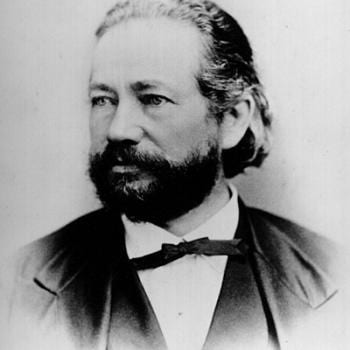
The Cut recently ran a very long, shall we say, confession, called, “There’s a Divide in Even the Closest Interracial Friendships Including Ours,” an excerpt from a forthcoming book by Aminatou Sow and Ann Friedman. The former is a black woman and the latter a white woman. The excerpt is meant to instruct the reader on the dynamics, challenges, and best practices of interracial friendships.
Early on, Aminatou is described as being
always on high alert for things strangers might say to her, but her guard is down when she’s with people she knows. With strangers, it feels like bracing for impact while her plane crashes, but when it’s an incident with someone she loves, like a white friend or intimate partner, it doesn’t feel as dramatic. Morris says that in these cases, it’s more like a drop of mustard falling on your pants. You notice and you feel uncomfortable about it, but the person who dropped the mustard does not even register what has happened. Now you have to decide whether to say something and call attention to the stain. Either way, there is awkwardness and discomfort. And pain never lurks too far behind racial discomfort.
The scenario in which Aminatou’s anxieties manifested was a birthday party for a third party hosted by Ann at her home (but not planned or organized by Ann). Aminatou was invited and showed up late, discovering, to her horror, that she was the only black person in attendance. Aminatou, of course, had been in all white environments before, but this felt different. It felt like betrayal, like Ann had not considered her or even bothered to prepare her for Ann’s new, apparently all-white life (Aminatou had been living outside the L.A. area for several years and, therefore, not in regular, physical contact with Ann’s life).
Do I even know you? she wondered. If this was how Ann’s life was organized now, Aminatou wasn’t sure of her place in it. She also wondered what other signs she had missed over the years.
But Aminatou did not immediately bring up her discomfort to Ann, but rather exited the party early. She felt a bit silly, she admits, but “she knew it was not a small deal because of the feelings that came bubbling up to the surface for her. She felt uncomfortable…” But, to make matters worse, Ann didn’t bring it up either. And Aminatou knew that Ann would have normally called out such despicable situations. The two shared the same ideas about race and society.
We had discussed plenty of times how disgraceful it was for people to plan or participate in all-white panels at professional conferences. (All-male panels? Also not great!) A birthday party isn’t a professional event, but the point still stands. If you’re a white person and your weekend trips, baby showers, and dinner parties are all-white affairs, this signals a few things to your Black friends. At best it shows that your gatherings are places where only white people are welcome. At worst it leads them to assume that they’re your only Black friend, a token you collected like a diversity Pokémon. Not actually a real friend. For white people, being in all-white spaces is a choice they make, not something that accidentally happens when they don’t double-check the guest list.
Ann was being hypocritical and aloof (i.e. not critically conscious in this scenario). Her silence was deafening. That Ann was able to not pay attention to race at the party simply highlighted her privilege over and against Aminatou’s inability to do the same. For the two friends, this transgression by Ann, her exertion of privilege, was detrimental (to a relationship founded upon these sorts of expectations). “This was about so much more than a single unfortunate birthday party. It highlighted an unbridgeable gap between the two of us.”
Some people will act as if these incidents are just misdemeanors easily waved off, but Aminatou firmly believes that interracial intimacy is the only context in which “broken windows” theory is actually relevant: any visible signs of crime encourage further crime! You have to call it out or it will erode your relationship.
Ann is also accused of trading on her relationship with Aminatou to bolster her own reputation on racial politics; Aminatou was Ann’s “racial endorser,” a common side effect of interracial friendships, we are told. Ann’s lack of awareness about all of this was the worst part. Then, showing her white fragility, Ann became defensive (the result of being raised on a liberal diet of “post-racial” myths and lack of historical awareness, they say) when Aminatou addressed the incident. It was not intentional. Ann had not even planned the party. But, eventually, Ann assumed her proper (woke) posture and lamented her behavior and obtuseness. Impact over intent, and all that.
The article goes on to unpack their conversation and how to work through the dynamics of interracial friendships. Key among their advice is remembering that “Race is not a challenge to overcome. It’s something to be constantly aware of. ” For those who have imbibed critical race theory, racism is ordinary and ubiquitous. Because it is not individual prejudice but rather the assumptions, norms, and narratives of dominant culture which condition all of us (i.e. it exists systemically or institutionally), it cannot be individually discarded through liberal notions of colorblindness (or powerblindness). It is a never ending struggle (unto liberation) that only the critically conscious, the woke, can engage in.
Throughout the article the friendship is marked by impatience and suspicion. Perpetual (to some extent) division along racial lines is presumed at the outset. The terms of the relationship are set by the racial politics in vogue; external demands govern its internal dynamics. Ann is required to be aware of systemic racism (as defined by critical race theory, though, of course, that term is never used in the article) and exhibit said awareness in how she relates to Aminatou. The good to which the friendship is ordered stands outside of its members, not inherent to the relationship. It is noted early on that interracial friendships cannot be sustained like same-race-friendships on the basis of common interest and experience. That will not suffice when race is in play. Race is different, as it is often said. In the end, the longevity of the friendship is directly dependent on Ann’s willingness to admit her white ignorance, her unconscious bias, her white privilege.
This is what’s happening to friendships. As Iona Italia noted well the other day, stories like these are ubiquitous in the U.S. and U.K. This is the real ramifications of critical race theory sinking its tentacles into the popular consciousness and discourse. ‘White Fragility’ dinner parties aren’t even the worst of it. Everything is political now, and in an allegedly racialized society, everything, even our private, personal relationships, is a matter of racial politics, the pursuit of “equity.”
Ijeoma Oluo, in her 2018 bestseller, So You Want to Talk About Race?, talks about the all-encompassing nature of intersectionality (and critical race theory generally given the interdependence of the two). “Remember,” she writes, “while embracing intersectionality is vital for our efforts of fighting racism and other oppression, it applies to all aspects of our lives, not just our movements.” It must not only dictate legislation, school curriculum, and corporate practices, but even our private conversations and personal relationships. The intersectional sensibility is a guide to life. Critical awareness and reflection (including how oppressions are interlocking and mutually reinforcing) must be taken into account in every aspect of life.
And this is what’s going to happen to churches, small groups, Sunday school classes if critical social justice ideology is allowed to flourish therein. It is a totalizing theory that cannot be arbitrarily compartmentalized. The insularity of white communities are considered an incubator for bad thinking on race (a perpetrator of post-race assumptions), a way to escape the harsh realities that BBIPOC’s (black, brown, indigenous, people of color) are forced to live. Those taken by initiatives like Be The Bridge are already introducing the relationship style outlined above to congregations.
I recently spoke at a church about critical race theory. I was asked by several people what this stuff will do to churches (and I was told by many others about how it has already created tension in their own familial relationships and friendships). This, the “friend” dynamic described by The Cut, is what will happen.
The destruction, from the inside out, (via ideology invited in),of friendship will be detrimental to society, both of the temporal and spiritual variety. It will make them irreparably unstable.
Aristotle, and later Aquinas, taught that friendship is a desirable, even necessary (for humans), good in itself. Per Aquinas, “There is nothing on this earth more to be prized than true friendship.” (See Summa Theologae II.II, Q. 23, Article 1; Q. 25, Article 1; Q. 26, Article 3). “Friendship is the source of the greatest pleasures, and without friends even the most agreeable pursuits become tedious.” (Disputed Questions on the Virtues, Q.2, Article 2).
not every love has the character of friendship, but that love which is together with benevolence, when, to wit, we love someone so as to wish good to him. If, however, we do not wish good to what we love, but wish its good for ourselves, (thus we are said to love wine, or a horse, or the like), it is love not of friendship, but of a kind of concupiscence. For it would be absurd to speak of having friendship for wine or for a horse.
Yet neither does well-wishing suffice for friendship, for a certain mutual love is requisite, since friendship is between friend and friend: and this well-wishing is founded on some kind of communication. Accordingly, since there is a communication between man and God, inasmuch as He communicates His happiness to us, some kind of friendship must needs be based on this same communication, of which it is written (1 Corinthians 1:9): “God is faithful: by Whom you are called unto the fellowship of His Son.” The love which is based on this communication, is charity: wherefore it is evident that charity is the friendship of man for God.
Friendship is loving, charitable, and mutual (though not necessarily equally so).
Further, society springs from man’s innate sociability. Animals may possess a certain gregariousness but only humans, equipped with rational souls (will and intellect), possess the requisite consciousness for forming society. And although association serves the needs of self-preservation and mutual assistance, it primarily derives from man’s affection for others and association for its own sake. In a very real sense, friendship (the highest expression of love) is foundational to every association, every society (friendship being “the reciprocal willing of the good of another for the other’s own sake,” Aristotle, Nichomachean Ethics, VIII.2). This is why good societies must be oriented to the common good, friendship expressed writ large. But friendship on a macro level cannot be sustained absent widespread friendship on a micro level. Societal institutions and norms, then, must function to cultivate this, serving the end of the common good on every level appropriate.
Friendship has already been declining in American life. As The Cut itself has written about, a third of American don’t know their neighbors. Millennials don’t know their neighbors at all. It is no wonder that practices of subsidiarity and social cohesion have largely vanished from public life. The regrettable state of our inter-mediating institutions (viz., the church) no doubt contribute to the dilapidated state of the local. But no friendship, no neighbors is better than any substitute based on the requirement of applied critical consciousness.
As stated, friendships must be directed towards a common, shared end. “Equity,” as defined by critical race theory, will not suffice because it is distorted, disordered good. Neither is diversity for its own sake an appropriate, shared end, one upon which friendship can be built. Friendship cannot be based on transgression hunting or some amorphous, utopian political goal.
Friendship is supposed to be (in classical thought) a pure perfection rather than a mixed one. Meaning, it is a perfection that implies no limitation on its possessors (like being an accomplished sculptor would). It provides, in some real way, self-transcendence through selfless love and sacrifice and exists after death. The friendship of Aminatou and Ann is not the model of Christian friendship (sacrificial and charitable) (Prov. 17:9, 17; 18:24; John 15:13; Rom. 1:11-12; 1 Cor. 13:7) that Christians should emulate.
Image credit @wednerwoods / Unsplash















